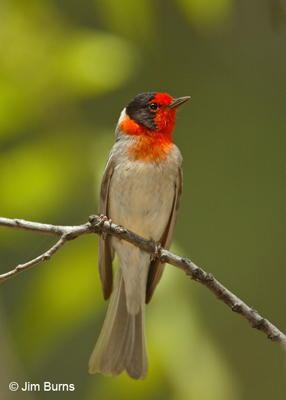
Not so in the west, including Arizona, where there are fewer species of warblers, fewer deciduous forests to serve them as conduction routes, fewer oases to attract them, and generally less predictable spring weather. Spring warbler migration here may peak first week of May, but good luck finding the spectacular concentrations eastern birders enjoy.
Arizona birders, on the other hand, have understandably come to associate warbler migration more with fall. Though fall migration here, just as in the east, is more protracted than spring migration, the waves of mixed western warbler flocks seem to be more geographically concentrated here in fall than in spring, flowing south along the ridgelines of our highest mountain ranges. And the bonus for Arizona birders is young of the year western warblers don't present nearly as many identification problems as those in the east.
Though Mt. Ord and Pinal Peak are certainly good destinations, the highest coincidence of fall warblers, paved roads, and natural beauty in Arizona is Mt. Lemmon above Tucson. The Catalina Highway to the top of Lemmon traverses the south side of the Santa Catalinas, 35 miles through five different life zones famously touted as the trip equivalent of Mexico to Canada. The views at almost every hairpin turn are almost as awesome as the diversity of western warblers you may encounter at the top if you hit the right day.
The three best areas, where you will want to park and walk, are all near the top along the ridgelines. The first is a jeep trace off to the right just past the Palisade Ranger Station signed "Incinerator Ridge." The second, the road to Mt. Bigelow, is also off to the right a short way farther. Drive to the top and walk back down the upper reaches just below the antennas, glassing the treetops as you go. Then drive the two miles past Ski Valley to the top of Lemmon and walk the trail through the forest to the west. Expect twelve species of warblers, the most beautiful being Painted Redstart and Red-faced, the most special being Townsend's and hermit, migrants from the Pacific Northwest.
The time for this trip is right now for the next month to six weeks. August monsoons may not say "fall" to you, but warblers go by their own internal calendars that have nothing to do with the one on your refrigerator door. If you can't get there early remember migrant warblers feed all day to fuel their long flight. Stay late and catch the spectacular lightning displays of a late summer monsoon storm, but be safe and don't become a statistic. Warbler numbers and diversity are the statistics you want. This is the best of Arizona's most concentrated migration season.